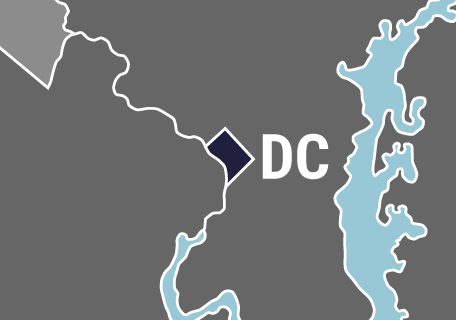WASHINGTON — A follow-up released Friday to a scathing safety audit of the DC Circulator — first obtained by WTOP — finds progress is being made on safety-critical issues, but many problems still remain.
The follow-up was conducted in January — five months after the August inspections found just two of 42 buses inspected should have been on the road.
In the January audit, a sample of 22 buses were checked, with the oldest buses in the fleet averaging 0.9 safety-critical defects that should lead to the bus being pulled from service for checks, and the second-oldest buses averaging 0.7 of the defects.
Both numbers are improvements from the August audit, which found an average of more than three safety-critical problems on average for each of the oldest buses.
Also, the inspectors looked at several of the newest buses, which had many fewer defects since they had not been subjected to the years of maintenance issues identified in the audit.
“I don’t see how you can sit there then and say 80 percent of the problems have been taken care of when you only look at 20 buses, and [in the August inspection, so many more] had at least one safety problem sufficient to take it out of service,” D.C. Councilmember Mary Cheh told DDOT Director Leif Dormsjo at a budget oversight hearing Friday.
“This audit is just a snapshot in time,” Dormsjo responded. “The defects that were identified in August were corrected.”
The January audit still found an “unacceptable” maintenance situation, including a shortage of buses that failed to meet minimum requirements for scheduled service.
“[Thirty percent] of the total fleet of 67 buses was down for repair, leaving 47 buses available to meet a peak demand of 48 buses, which highlights the need for continued maintenance improvements,” the January audit says.
“Having 30 percent of the fleet down for repairs is unacceptable by any standard,” it continues.
Two buses that were taken out of service in March and May, respectively will not be available again until June or July because of bodywork or engine repairs.
Dormsjo believes further additions to maintenance staff and an improved maintenance facility are crucial to larger improvements.
DDOT is in talks with Metro about building a shared space that could provide the six maintenance bays Dormsjo believes are needed for the Circulator fleet.
Since the August audit, DDOT has increased the number of maintenance bays from two to three, and added technicians.
In part due to the large number of vehicles out for repairs at a given time, and in part because of the lack of an expanded maintenance facility, Dormsjo told Councilmember Charles Allen that there is no way he could recommend launching the promised Circulator route to the new D.C. United Stadium and Southwest Waterfront in coming years.
Allen says the city must launch the route since it was part of the promises included in the stadium deal.
View the January audit below:







